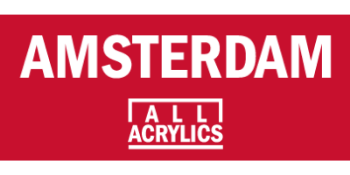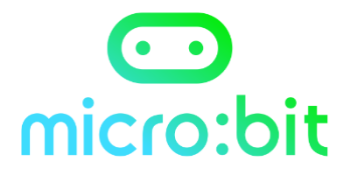Cookies help us deliver our services. By using our services, you agree to our use of cookies.
From the same category
ElecFreaks 360 Digital Servo with Wheel and Tire
EF09083
360 Digital Servo(EF90D) with wheel and tire is a kind of 360° analog servo. It is light and portable, a little bigger than 5 cent coin. It works at 3V voltage and uses pulse width to adjust speed of the servo rotation, which also can be used to make small robot modules, mechanical arm modules and intelligent car modules.
Contents:EF90D micro:servo 360 degrees digital servo for micro:bit Wheel
Contents:
€5.45
ElecFreaks Servo 180degree EF92A for micro:bit
EF09082
This is a micro servo It only weights 20g and provides a 1.6kg.com torque. It will comes with a 3-pin control cable and mounting hardware.
Almost all the micro bit servo in the market have to be driven by 5V, but the normal working voltage for micro:bit is 3V. It is embarrassing to drive a 5V servo with a micro:bit. Thus, we have customized these two servos that can be driven by two batteries with the lowest working voltage at 2.7V. It is the first batch of the micro bit servo designed for the micro:bit in the market.
The high linearity makes its control more accurate. It is designed for micro:bit with high-linearity, which gives you a smooth feel of control.
Low working voltage, compatible to 3V-5.5V(With 2.7V at least), designed for micro:bit.
Almost all the micro bit servo in the market have to be driven by 5V, but the normal working voltage for micro:bit is 3V. It is embarrassing to drive a 5V servo with a micro:bit. Thus, we have customized these two servos that can be driven by two batteries with the lowest working voltage at 2.7V. It is the first batch of the micro bit servo designed for the micro:bit in the market.
The high linearity makes its control more accurate. It is designed for micro:bit with high-linearity, which gives you a smooth feel of control.
Low working voltage, compatible to 3V-5.5V(With 2.7V at least), designed for micro:bit.
€5.25
ElecFreaks Servo 360degree EF90A for micro:bit
EF09081
ELECFREAKS micro:servo is a kind of 360 deg analog servo. It is light and portable, a little bigger than 5 cent coin. It works at 3V voltage and uses pulse width to adjust speed of the servo rotation, which also can be used to make small robot modules, mechanical arm modules and intelligent car modules.
€5.25
Kitronik :MOVE Motor for the BBC micro:bit
KI 5683
Develop your coding skills with the Kitronik :MOVE Motor for micro:bit, a fun introduction to buggies and robotics. The Kitronik :MOVE Motor for the BBC micro:bit provides a fun introduction to buggy robotics. More than just a programmable buggy, learning to use all of the included features will give the budding roboteer a solid grounding in robotics as a whole.
Learn about movement, how to utilise light and sound, obstacle detection and avoidance, and how to code :MOVE Motor to follow a line. When used in conjunction with the micro:bit's radio features, the possibilities are endless.
Attached to the chassis are two bi-directional DC motors with variable speed control. The wheels have rubber tyres and are a simple push-fit onto the motor shafts. Slot a BBC micro:bit into the edge connector and you are ready to code. There is no other assembly required and no tools required.
There are built-in battery holders for 4x AA batteries. This provides a regulated voltage supply to power the BBC micro:bit which is fed into the edge connector. There is also a power switch to conserve batteries when the buggy is not in use. The micro:bit slots into the onboard edge connector. Code the micro:bit, plug it into the buggy, switch the power on, and then play.
Features:The Kitronik :MOVE Motor for the BBC micro:bit provides a fun introduction to buggy robotics and coding. It is backed up by a range of fun tutorials to introduce you to all of the great features. All of the tutorials and resources are free. There is no soldering required and assembly is quick and super simple. The buggy features two bi-direction DC motors. There are ultrasonic distance and line-following sensors onboard. It also features a Piezo sounder and pen mount. There are 4 full-colour programable ZIP LEDs. Two-pin outputs that are ideal for servo connections (can be used for other inputs and outputs). The battery holder is built onto the chassis. The buggy is also fitted with a power switch to conserve the batteries. There is also an onboard edge connector for the micro:bit, code, plug and play. Kitronik has produced custom MakeCode blocks to simplify coding with the MakeCode editor Kitronik have also created example MicroPython code in our GitHub repository.
Contents:1 x :MOVE Motor chassis. 2 x Wheel and tyres. 1 x Booklet with some quick tutorials to get you started. There are also additional online tutorials and step-by-step guides for extra projects.
Learn about movement, how to utilise light and sound, obstacle detection and avoidance, and how to code :MOVE Motor to follow a line. When used in conjunction with the micro:bit's radio features, the possibilities are endless.
Attached to the chassis are two bi-directional DC motors with variable speed control. The wheels have rubber tyres and are a simple push-fit onto the motor shafts. Slot a BBC micro:bit into the edge connector and you are ready to code. There is no other assembly required and no tools required.
There are built-in battery holders for 4x AA batteries. This provides a regulated voltage supply to power the BBC micro:bit which is fed into the edge connector. There is also a power switch to conserve batteries when the buggy is not in use. The micro:bit slots into the onboard edge connector. Code the micro:bit, plug it into the buggy, switch the power on, and then play.
Features:
Contents:
€48.95
Kitronik :MOVE Motor Klaw Kit
KI 5696
The :MOVE Motor Klaw provides a fun and easy to install addition to the Kitronik :MOVE Motor buggy for microbit. It has been carefully designed to have the ability to fit both vertically and horizontally with one bolt. Included are two types of Klaw attachments for each of these builds.
It is controlled by a low voltage servo which is included, this servo is used to open and close the Klaw. The voltage supply and control signal are all from the :MOVE Motor via the pin headers, simply connect the servo lead onto the pin headers.
The :MOVE Motor Klaw can be coded with MakeCode or with MicroPython and we have produced online guides to walk you through both. These guides can be found in the list of resources below along with the build instructions.
Features:Easily add a gripping Klaw to :MOVE Motor. Servo powered opening and closing with the servo included as a part of the kit. Fit to :MOVE motor either horizontally or vertically. Easy to assemble. Code it with MakeCode or with MicroPython.
Contents:1 x Mini 180 Degree Servo with accessories. 2 x M3 x 16mm Screws. 1 x M3 Steel Washer. 2 x M2 x 12mm Screws. 1 x M4 x 25mm Screw. 6 x Laser Cut Perspex Parts. Printed assembly instructions.
Dimensions:Overall Length: 115mm. Closed Width: 70mm. Open Width: 125mm. Height w/servo: 38mm.
It is controlled by a low voltage servo which is included, this servo is used to open and close the Klaw. The voltage supply and control signal are all from the :MOVE Motor via the pin headers, simply connect the servo lead onto the pin headers.
The :MOVE Motor Klaw can be coded with MakeCode or with MicroPython and we have produced online guides to walk you through both. These guides can be found in the list of resources below along with the build instructions.
Features:
Contents:
Dimensions:
€13.95
Kitronik Finnboard Motor Discs for Craft & Code Refill 50 Pack
KI 56131
These pre-cut Finnboard motor discs are perfect replacement parts for the Kitronik Lesson in a Box - Craft & Code for BBC micro:bit and the Kitronik Craft & Code Single Packk. Supplied in a pack of 50, they ensure you’ll always have spares for classroom or individual projects.
€29.95
Kitronik Klaw MK2 Robotic Gripper Kit
KI 25104
The Kitronik Klaw MK2 Robotic Gripper Kit/robot claw is the latest version of the original and popular Kitronik Klaw and is a great addition to any robotics or buggy project.
It has been carefully redesigned so that it is now also compatible with both the MOVE:mini Mk1 and Mk2. On Mk1 it can be mounted to the boot lid and on the MK2 it can be added to both the boot lid and the base plate. Extra holes were added and a slight change to the part which holds the servo was made to facilitate this.
It is controlled by a low-voltage servo which is included, this servo is used to open and close the Klaw.
At the rear of the unit are mounting points allowing it to be bolted to other items, such as buggies or robotic arms. Supply voltage: 3V to 6V. Supplied as a set of parts that require simple assembly, see the resources section below for build instructions.
Features:Easily add a gripping Klaw to any robotics project. It is compatible with both :MOVE mini Mk1 and MK2. Servo-powered opening and closing with the servo included as a part of the kit. Easy to assemble.
Contents:1 x Mini 180 Degree Servo With Accessories. 5 x Laser Cut Perspex Parts. 1 x M3 Steel Washers. 2 x M3 x 16 Pozi PanSteel. 2 x M2 x 16 Pozi PanSteel. Printed Assembly Instructions.
Dimensions:Closed Length: 85mm. Closed Width: 70mm. Open Length: 45mm. Open Width: 125mm. Height w/servo: 38mm.
It has been carefully redesigned so that it is now also compatible with both the MOVE:mini Mk1 and Mk2. On Mk1 it can be mounted to the boot lid and on the MK2 it can be added to both the boot lid and the base plate. Extra holes were added and a slight change to the part which holds the servo was made to facilitate this.
It is controlled by a low-voltage servo which is included, this servo is used to open and close the Klaw.
At the rear of the unit are mounting points allowing it to be bolted to other items, such as buggies or robotic arms. Supply voltage: 3V to 6V. Supplied as a set of parts that require simple assembly, see the resources section below for build instructions.
Features:
Contents:
Dimensions:
€13.50
Kitronik Lesson in a Box: Mai-Z MouseBot for the BBC micro:bit
KI 56135
Smart, playful, and packed with potential, meet Mai-Z The MouseBot, the ultimate programmable robot buggy for young coders aged 8–14! Whether it’s drawing shapes, following paths, or responding to motion, your young learners are in the driver’s seat, literally!
Kitronik's Lesson in a Box® for Mai-Z for BBC micro:bit is a complete class-based solution, designed for teachers with a limited coding background to allow a full exploration of all of Mai-Z’s features. The Lesson in a Box (Mai-Z) is a complete set of electronics and teaching resources to enable successful cross-curricular lessons with minimal teacher effort. The kit and teaching resources have been developed to save you precious time. The Lesson in a Box - Mai-Z the MouseBot for BBC micro:bit is supplied in a sturdy and convenient Gratnells tray, with a lit, for safe storage.
The kit is supplied with an extensive set of teaching resources that are aligned for both US & UK teaching consisting of; Teacher/Technician/Classroom Assistant instructions, Scheme of learning, lesson plans & presentations, Student instructions & slideshows, Exclusive digital versions of resources & code examples. Each Kit comes with 11 x Mai-Z The MouseBot Floor Robots & USB-C Charging Cables, 11 x Double-sided A1 Map/Line Following Posters, 2 x A2 Features Posters, 4 x STOP:bits & accompanying switched battery holders, 11 x Sharpies, 6 x Table Tennis Balls.
Designed for hands-on learning, the Kitronik Mai-Z is a versatile educational robot built for the BBC micro:bit. Whether you're diving into coding with MakeCode’s block-based editor or exploring a world beyond monitor screens with our exclusive Screen-Free Programming add-on pack, Mai-Z makes STEM learning intuitive and fun. It’s even fully compatible with MakeCode CreateAI, allowing gesture-based control and AI-powered coding right out of the box. Aligned with UK and US curricula, Mai-Z empowers both learners and teachers to master core computing concepts through interactive, project-based activities.
In developing this box Kitronik wanted it to be affordable, useful and robust enough for teachers to use time and time again. The teaching resources cover many curriculum specifications and have ample opportunities for personal development by encouraging pupils to view traditional STEM/STEAM activities as having value across their curriculum.
All of the teaching resources are set out in a teacher, ‘user-friendly' way, including lesson plans, presentations, and printable worksheets. These are supplied in Microsoft Word and PowerPoint formats as well as PDFs, which can be copied, modified, and printed to suit your teaching style.
Kitronik's Lesson in a Box® for Mai-Z for BBC micro:bit is a complete class-based solution, designed for teachers with a limited coding background to allow a full exploration of all of Mai-Z’s features. The Lesson in a Box (Mai-Z) is a complete set of electronics and teaching resources to enable successful cross-curricular lessons with minimal teacher effort. The kit and teaching resources have been developed to save you precious time. The Lesson in a Box - Mai-Z the MouseBot for BBC micro:bit is supplied in a sturdy and convenient Gratnells tray, with a lit, for safe storage.
The kit is supplied with an extensive set of teaching resources that are aligned for both US & UK teaching consisting of; Teacher/Technician/Classroom Assistant instructions, Scheme of learning, lesson plans & presentations, Student instructions & slideshows, Exclusive digital versions of resources & code examples. Each Kit comes with 11 x Mai-Z The MouseBot Floor Robots & USB-C Charging Cables, 11 x Double-sided A1 Map/Line Following Posters, 2 x A2 Features Posters, 4 x STOP:bits & accompanying switched battery holders, 11 x Sharpies, 6 x Table Tennis Balls.
Designed for hands-on learning, the Kitronik Mai-Z is a versatile educational robot built for the BBC micro:bit. Whether you're diving into coding with MakeCode’s block-based editor or exploring a world beyond monitor screens with our exclusive Screen-Free Programming add-on pack, Mai-Z makes STEM learning intuitive and fun. It’s even fully compatible with MakeCode CreateAI, allowing gesture-based control and AI-powered coding right out of the box. Aligned with UK and US curricula, Mai-Z empowers both learners and teachers to master core computing concepts through interactive, project-based activities.
In developing this box Kitronik wanted it to be affordable, useful and robust enough for teachers to use time and time again. The teaching resources cover many curriculum specifications and have ample opportunities for personal development by encouraging pupils to view traditional STEM/STEAM activities as having value across their curriculum.
All of the teaching resources are set out in a teacher, ‘user-friendly' way, including lesson plans, presentations, and printable worksheets. These are supplied in Microsoft Word and PowerPoint formats as well as PDFs, which can be copied, modified, and printed to suit your teaching style.
€775.00
Kitronik Line Following Add-on for :MOVE mini V2
KI 5659
Add line following functionality to the Kitronik MOVE mini MK2 for the BBC micro:bit with this easy to assemble add-on kit. This version of the line following add on has been designed to fit both the new :MOVE mini MK2 and the original version. The assembly instructions for both can be found in the Resources section below.
This add-on comes with all the parts required to add line following functionality to the :MOVE mini and does not require any soldering. Once built, the sensitivity of the left and right sensors can be individually tweaked to ensure smooth operation.
See the resource section below to download the line following code example we created. By default the code will cause the buggy to follow a dark line on a light background but the code can be altered to do the opposite.
There is no soldering required but the kit does require some mechanically assembly.
Features:Add line following functionality to the :MOVE mini for the BBC micro:bit. Can either follow a dark line on a light back ground or a light line on a dark background. The line following sensitivity can be adjusted with a screwdriver. No Soldering required. Example line following code is provided. This product is backwards compatible with the first version of :MOVE mini. There are two sets of assembly instructions in the resources section below. Contents:1 x :MOVE Sensor Interface for the BBC micro:bit. 1 x :MOVE Line Following board for the BBC micro:bit. 1 x Connector Cable. 2 x CS M3 8mm Screws. 2 x M3 Hex Full Width Nut. 5 x CS M3 12mm Screws. 2 x 6mm Spacers. 2 x 12mm CS Screws.
This add-on comes with all the parts required to add line following functionality to the :MOVE mini and does not require any soldering. Once built, the sensitivity of the left and right sensors can be individually tweaked to ensure smooth operation.
See the resource section below to download the line following code example we created. By default the code will cause the buggy to follow a dark line on a light background but the code can be altered to do the opposite.
There is no soldering required but the kit does require some mechanically assembly.
Features:
€21.95
Kitronik Linear Actuator
KI 2595
Kitronik's Linear Actuator converts the circular movement of a 180° servo (supplied) into motion in a straight line, one way and then the other. It can be mounted to a project to provide either horizontal or vertical movement.
Linear Actuators are useful for a whole host of different applications, like; robots, automated button switching, steering racks for buggies, a point switcher on a model railway, animating a diorama display, etc. Linear actuators are also used extensively in industry and in consumer products, such as; valves, cams, floppy disk drives and optical disk drives, just to name a few.
The Linear Actuator has been cut from a 5mm clear blue Perspex Sheet, the same material as used in our servo powered Klaw gripper. There are a range of mounting holes at either end of the rack including a 3mm hole, a 3mm square, and standard servo horn holes suitable for wire (1mm dia) and it has approximately 20mm of travel. It has a gear ratio of 2:3 and the stall torque of the provided servo is 1.5kg/cm at 6V and 1.3kg at 4.8V.
Features:The Linear Actuator converts the circular movement of a 180 degree servo (supplied) into motion in a straight line. It is supplied with a 180 degree FS90 servo and fixings. Useful for a wide range of applications, such as; robotics, switching, animating displays and more. Use with boards such as microbit, Arduino, or RaspberryPi. It can be used with a number of microbit accessory boards, such as;
-- Servo:Lite board for :MOVE mini.;
-- Kitronik 16 Servo Driver Board for the BBC micro:bit.;
-- All-in-one Robotics Board for BBC micro:bit. ;
Contents:Linear Actuator Laser Cut Parts. 1 x Micro 180 Degree Servo and fixings. 2 x M3x 10 Pozi PanSteel M/C. 1 x M3 Form A Steel Washer. Linear Actuator assembly Instructions. ;
Linear Actuators are useful for a whole host of different applications, like; robots, automated button switching, steering racks for buggies, a point switcher on a model railway, animating a diorama display, etc. Linear actuators are also used extensively in industry and in consumer products, such as; valves, cams, floppy disk drives and optical disk drives, just to name a few.
The Linear Actuator has been cut from a 5mm clear blue Perspex Sheet, the same material as used in our servo powered Klaw gripper. There are a range of mounting holes at either end of the rack including a 3mm hole, a 3mm square, and standard servo horn holes suitable for wire (1mm dia) and it has approximately 20mm of travel. It has a gear ratio of 2:3 and the stall torque of the provided servo is 1.5kg/cm at 6V and 1.3kg at 4.8V.
Features:
-- Servo:Lite board for :MOVE mini.;
-- Kitronik 16 Servo Driver Board for the BBC micro:bit.;
-- All-in-one Robotics Board for BBC micro:bit.
Contents:
€11.50














































































































